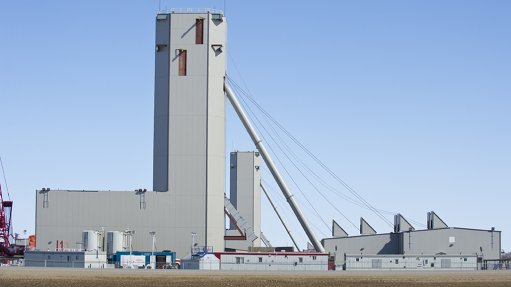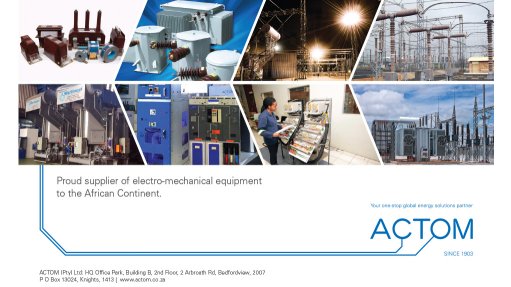Correct concrete vital for industrial flooring


BRYAN PERRIE Keeping the floor clean, maintaining the joint sealant and filler and timeous repair of any damage will ensure a long life span of concrete floors
With the construction of industrial floors requiring concrete with characteristics entirely different from that of concrete for vertical structures, it is important to use the correct material in the correct proportions, says technical service provider The Concrete Institute (TCI) MD Bryan Perrie.
He says TCI receives a number of requests for advice on a monthly basis regarding industrial flooring faults, and that the material specifications for all the ingredients of industrial concrete floors exist and should be adhered to.
Perrie adds that the materials must also adhere to South African Codes of Practice for the actual placement of concrete and the finishing of floor slabs. Additionally, the adequate floor strength must be achieved or the floor will be flawed structurally, and will not last.
“This means that the correct water-to-cement ratio needs to be maintained. These proportions are important to ensure that the concrete is not too stony, as it will be difficult to compact properly. Also, the correct proportions will ensure that the required surface finish can be achieved. If the surface finish is not adequate, the surface will deteriorate,” he explains.
The surface finish of the flooring is critical, depending on whether it is for indoor or outdoor use. Surface tolerances are important for the safe operation of materials handling equipment, especially in high racking facilities. The type of joint sealant or filler used on the flooring must be appropriate for the traffic that the floor, or hardstanding, will handle. These joint sealants and fillers must also be maintained regularly.
Perrie notes that a thorough understanding of all the characteristics of concrete, the influence of material selection and environmental inconsistencies, as well as handling and finishing, are essential to produce a quality floor. Disregarding any of these factors can result in problems, which are normally identified too late in the process to be corrected.
He stresses that consistency is crucial during all the stages of the construction process – from receiving, discharging, placing and consolidating the concrete to finishing the flooring. The importance of protecting the concrete while it is being placed, and curing thereafter, are also significant.
"An incomplete brief from the client; a lack of attention to correct proportioning, handling and finishing; and inexperienced contractors and operators could all contribute to a floor with poor durability, strength and aesthetics.
“The flooring process relies on the successful completion of successive phases, understanding what is being done in each phase, using the right concrete and equipment, as well as the tasks being carried out by the right person at the right time," Perrie emphasises.
Design and Construction
Perrie mentions that there are several different floor design types currently in use for internal and external industrial flooring applications.
These include plain jointed floors, with joints at reasonably short spacing intervals of between 4 m and 5 m; and floors comprising large panels of between 30 m and 40 m, with reinforcing and steel fibres that use more expensive joints. Post-tensioned floors and floors using concrete which compensates for shrinkage have also been laid more recently.
“The type of floor design that is used will depend on a number of factors. Firstly, the type of vehicles being operated on the flooring, such as large pneumatic tyre vehicles, forklifts or pallet jacks with small wheels, will influence the design. Secondly, the type of operation, such as external hardstanding, free movement areas in warehouses, racking, spacing and height must also be considered,” explains Perrie.
He adds that construction of the flooring comprises placing and spreading the concrete to ensure that segregation does not occur. The concrete can be compacted using either immersion or surface vibration. The surface finish is achieved using brooming or texturing for the external floors or through power floating and trowelling for a smooth, polished surface for internal floors.
“Protecting the concrete from drying out during the placement and spreading of concrete, the compaction of the concrete and the finishing of the surface is critical in preventing cracking and poor surface strength. This can be achieved with the use of high-pressure mist sprays. Once the final finish is achieved, the concrete must be cured by preventing moisture loss to ensure maximum strength gain, especially at the surface which will carry the traffic.”
While the strength and integrity of the flooring is important during the construction process, Perrie concludes that good housekeeping, in terms of keeping the floor clean, maintaining the joint sealant and filler, as well as the timeous repair of any damage, are vital maintenance procedures that will ensure a long life span of concrete floors.
Comments
Press Office
Announcements
What's On
Subscribe to improve your user experience...
Option 1 (equivalent of R125 a month):
Receive a weekly copy of Creamer Media's Engineering News & Mining Weekly magazine
(print copy for those in South Africa and e-magazine for those outside of South Africa)
Receive daily email newsletters
Access to full search results
Access archive of magazine back copies
Access to Projects in Progress
Access to ONE Research Report of your choice in PDF format
Option 2 (equivalent of R375 a month):
All benefits from Option 1
PLUS
Access to Creamer Media's Research Channel Africa for ALL Research Reports, in PDF format, on various industrial and mining sectors
including Electricity; Water; Energy Transition; Hydrogen; Roads, Rail and Ports; Coal; Gold; Platinum; Battery Metals; etc.
Already a subscriber?
Forgotten your password?
Receive weekly copy of Creamer Media's Engineering News & Mining Weekly magazine (print copy for those in South Africa and e-magazine for those outside of South Africa)
➕
Recieve daily email newsletters
➕
Access to full search results
➕
Access archive of magazine back copies
➕
Access to Projects in Progress
➕
Access to ONE Research Report of your choice in PDF format
RESEARCH CHANNEL AFRICA
R4500 (equivalent of R375 a month)
SUBSCRIBEAll benefits from Option 1
➕
Access to Creamer Media's Research Channel Africa for ALL Research Reports on various industrial and mining sectors, in PDF format, including on:
Electricity
➕
Water
➕
Energy Transition
➕
Hydrogen
➕
Roads, Rail and Ports
➕
Coal
➕
Gold
➕
Platinum
➕
Battery Metals
➕
etc.
Receive all benefits from Option 1 or Option 2 delivered to numerous people at your company
➕
Multiple User names and Passwords for simultaneous log-ins
➕
Intranet integration access to all in your organisation
















